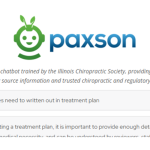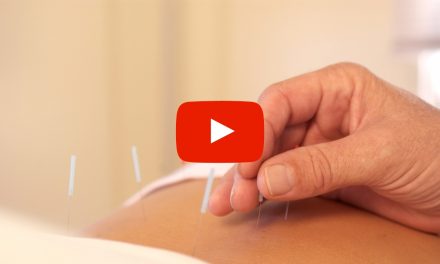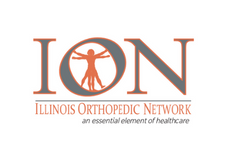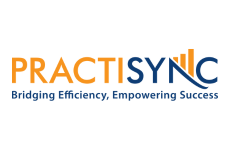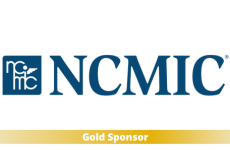
When Is an E/M Appropriate WITH a CMT?
Editor’s Note: The ICS has an on-demand course with Dr. Gwilliam covering the entire -25 modifier issue and all of the tips here.
Learn how to get paid for E/M services on the same day as CMTs. Dr. Gwilliam’s toolkit helps chiropractors document and tell the story clearly so payers recognize compliant, separate, billable exams.
Links for Today:
E/M and CMT Bundling Prevention Toolkit
Paxson (ICS Trained AI)
Transcript:
Marc:
So we’re doing a lengthy series, if you will, and we’re covering all of the components of the the work that Dr. Gwilliam did, and the toolkit to help our doctors get paid for E/Ms on the same date of service as a CMT, so chiropractic adjustment, along with the examination on the same day, we believe that the vast majority of the time that that is appropriate, but insurance companies like to basically treat everybody like an outlier. And so we know that there are outliers that are doing examinations way too often and billing out for those services way too often, but that is not the norm. In fact, the overwhelming, the vast overwhelming majority of doctors are doing this correctly, and insurance companies are still continuing to bundle them, or to use the pie analogy, are taking this larger pie and cramming it into the smaller pie and paying for just the one pie when they’re getting everything, and they’re getting the benefit of both pies. And here’s what’s really interesting: what we find is, when we do the research, these things are appropriate when our doctors are doing it, and that’s why the tips in the toolkit will include a link down below. But in the toolkit that Dr. Gwilliam put together, those tips actually are just telling the story differently. So it’s doing what you’re doing already, but telling the story differently, both on the claim form and in your documentation. So, what are we seeing when is an E/M appropriate?
Dr. Gwilliam:
So it is the standard of care for chiropractic. It’s been established for decades, really, but reinforced by evidence-based guidelines that it is appropriate and even necessary to provide the best outcomes for patients that we evaluate our plan, we look at the progress the patient has made, that we determine if what we’re doing is really helpful, and then we decide if we need to do more. That is truly the standard, regardless of the codes and the code rules; that’s what we should be doing. I mean, even if we forget about reimbursement, what is best for that person? What do they really need? We need to stop periodically and check our progress, just like you’re on a long road trip and you have to get out of the car and pull the map out and spread it over the hood, and look, did we get where we need to go? Do we need to change route? You know, we have to do that periodically with patients. There are several published, evidence-based guidelines, published by Clinical Compass, that are available for you to access without cost, that you can review, and essentially they support this best practice, that evaluation should be performed at the end of what they call trial periods of care, which usually six to 12 visits typically. Some payers even have policies where they say, do a re-exam within 30 days for us to consider the need for care. But the majority say, or rather, the problem we’re trying to solve is those who never pay for these types of rebounds. By the way, I want to make it clear, there are certain circumstances; someone fell out of a tree, or they got hit by a bus. That’s a clear reason for a new evaluation. We’re talking about how do we justify these periodic revaluations that are part of the standard of care? We’re in the middle of progress, we’re trying to measure it. These are the kinds of evaluations we’re trying to clarify about.
Marc:
Agreed, but there’s also times where we’re finding the insurers are actually bundling even new injuries. In fact, we’ve seen it, and I’ve seen it come across my desk where we’ll have somebody who’s been under care at one point. They haven’t been under care for about 18 months, and they have a new injury. Maybe they were just raking in their backyard or gardening, or who knows what, right, it doesn’t really matter, but at the end of the day, they come back into the chiropractic office. That’s still going to be your 99212, or 213, depending on the level of exam that you’re performing. Right? It’s still, you know, considered that re-exam, in a sense. But here’s what’s really interesting. And this is Blue Cross, Blue Shield of Illinois. So I’m going to give a quote directly from the chiropractic guidelines that they put out. And this is exactly what they say examples of when it may be appropriate to build an additional E/M service would be the evaluation of new patients, new injuries, exacerbations, and then, to your point, or periodic reevaluations. They actually call it out and say that that is an example of when it would be, or, I guess, to use their words, may be appropriate, and that’s why the toolkit matters again. We’ll drop the link down below, but they even say that periodic reevaluations are a key component to be able to appropriately built and get paid for.
Dr. Gwilliam:
Yeah, and what’s difficult is sometimes they have that right on their policies. Other payers do this too, and they still deny it and claim it’s bundled. Yet it’s their policy that periodic revaluations are appropriate. Now the challenge is our providers have to do a decent job, and as we’ve agreed, they must do, but you have to make sure you do an appropriate reevaluation, you document well, and the toolkit. It gives you all kinds of tips on that. There’s another payer network that speaks about this in a way that it helps us understand another concept, and that is that they say that reevaluations are necessary after a trial of care to determine if there was significant functional improvement, and if there should be another trial is warranted. And I like that concept. I like communicating that clearly in the records and telling that story, if you structure your care and the story that you tell as here’s a trial phase of care, and we have to figure out if it’s doing what we want it to do. And so, if it does, we’re going to determine if we need more. So it’s this concept of making that clear, even explicitly stating those kinds of words, calling it phases, calling it a trial of care. And so it’s communicating that story in a way that is really, really easy and clear for the other parties to understand and difficult for them to disagree or dispute.
Marc:
So what else do you find? I mean, do you find? I mean, obviously, we’ve now talked about two carriers, and we know that almost every carrier has a policy that indicates that it’s appropriate to do these re-examinations, because, let’s be honest, they have to. It’s a standard of care, I think, is it, is it Blue Cross, Blue Shield of Kansas City? I think is one of the other ones, right?
Dr. Gwilliam:
Yeah. And this is representative of most all payers have something like this, because this is verbiage right out of the code manual for the most part. They tell us, and most payers will agree with this, that an additional E/M service can be submitted if they have, and this is the important term, a significant and separately identifiable E/M service, which is above the pre-service, intra-service, and post-service work associated with the CMT that we discussed in another video. So our challenge is to make it very clear that the EM service was, quote, significant and separate identifiable, like those are the buzz words they use. So the toolkit is all about what makes an E/M service significant, what makes it separate, identifiable from the CMT, and how do you communicate that in a black and white way, so that there’s no gray?
Marc:
Yeah, and I think that’s that’s why make sure that you watch that previous video on what is in the pre service, intra service, and post service work, because that is a key component, and that’s really what kind of sews together all of the toolkit that Dr. Gwilliam put together, and again, that’s linked down below as well. Make sure that you check that out. It’s super important, and it’s going to help everybody get paid. And this is important, insurers are saying, you know, these payers are saying it’s okay to do these re-examinations, it’s okay to do E/Ms on the same data service as an adjustment. And so we got to make sure that our documentation supports that, and that the claim forms and the story we’re telling on the claim forms appropriately tell that story, that those are fully separate and distinct and following their rules.
Dr. Gwilliam:
I mean, often the denial of the bundle will say, Well, we looked at your records, and it looks like it wasn’t significant and certainly identifiable. I mean, that’s the most common rationale for denying an E/M on the same day of service as a CMT. And so the challenge then on us is, okay, well, how do we make it significant and certainly identifiable? Yeah, and the toolkit will tell you how to do that.
Marc:
It’s important to check it all out, and we’ll catch you next week.



